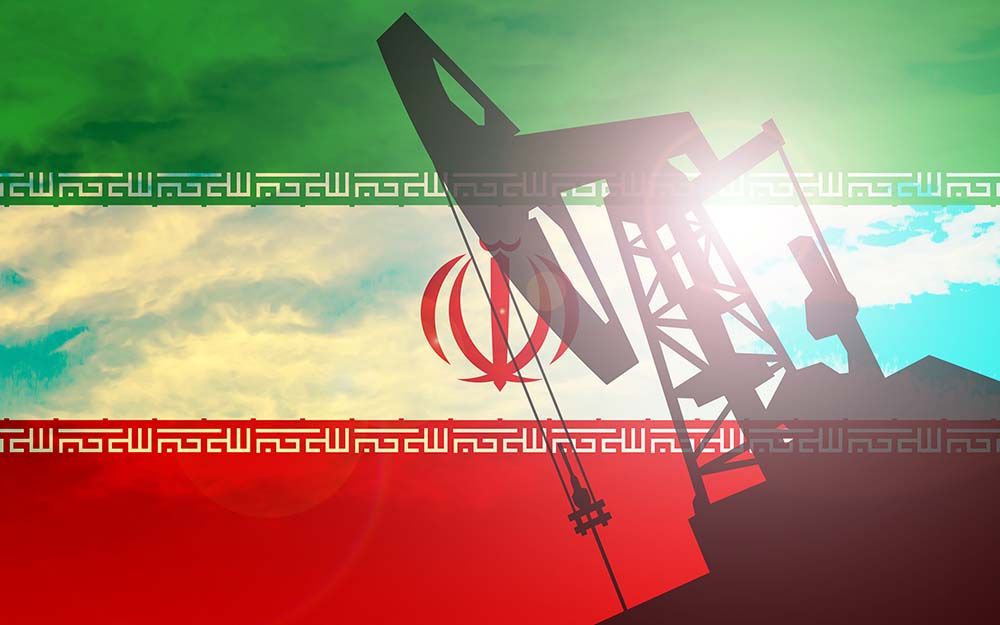Oil Prices, U.S. Dollar Respond to Iran Deal Demise
- Trump withdraws from Iran agreement as expected
- Oil higher, USD up, CAD up, RUB, INR and ZAR down although FX impact marginal
- In response to news Tehran threatens to restart nuclear programme

© Azat Valeev, Adobe Stock
Donald Trump has, as widely expected, decided to pull the U.S. out of the Iran nuclear deal.
The deal between the UN security council and Iran, was signed in 2015 as a way of mothballing and allowing outside monitoring of Iran's nuclear programme in exchange for a relaxation of stringent trade sanctions on the country.
However, president Trump has always been critical of the deal and last night, saying it does not do enough to prevent the "world's leading sponsor of terror from being on the cusp of acquiring nuclear weapons."
Trump has also said he will reimpose sanctions on Iran, although given his European allies remain signatories to the agreement the US will probably be alone in sanctioning against the country. There are however risks for European entities that continue to trade with Iran as they might flout US sanctions and there is also a risk the deal with the remaining members could also fall apart now the US has withdrawn.
"Extensive market focus has fallen on the 1m-1.5mbd fall in Iranian oil production over the 2012-2015 period of coordinated US and EU sanctions. We are sceptical that this change will have the same effect since the US is now acting alone. That said, the global reach of the US should not be under-estimated, and company concerns of running afoul of sanctions are very real," says John Rigby, an analyst with UBS.
Shortly after the announcement, Treasury Secretary Steve Mnuchin indicated that licenses for Boeing and Airbus to sell aircraft and components to Iran would be revoked which will cost the two companies nearly $40BN.
The news has wide-ranging implications for middle-east geopolitics, and financial markets.
“The withdrawal is likely to bolster market concerns of a potential supply-side shock, reinforcing the recent de-risking trend in FX markets and strengthening of the USD,” say Barclays in response to the developments.
Regarding the oil price, the renewed sanctions could threaten Iran’s ability to market its oil, but Barclays thinks that “the geopolitical consequences would likely play a larger and long-lasting role in pushing oil prices higher.”
Iran's initial response to the news Trump has pulled out was to threaten to restart its uranium enrichment programme with a view to restrating development of nuclear war-heads - an act which would put it odds with the remaining signatories.
However, Iranian president Rouhani was later seen to row-back on this threat and said he would first discuss the exisiting deal with the other members of the UN security council before deciding the next step.
Oil prices rose to fresh highs on the news given Iran's importance as a the thrid largest global oil producer; West Texas Intermediate (WTI) crude futures rose up to $70.61 per barrel, up 2.3% and near Monday's peak of $70.84, the highest level since November 2014.
Brent crude futures jumped as much as 2.5 percent to a three and a half year high of $76.74 on Wednesday.
"A material decline in Iranian oil production may not be the immediate result but a significant obstacle to further expansion seems a likely outcome," says Rigby.
FX markets gave a textbook response with the Dollar firming across the board.
Emerging market currencies were largely under pressure owing to expectations for rising oil prices which exert an outsized negative impact on those countries which import fuel.
The Indian Rupee is a notable loser; "key importers of Iranian oil are China and India, accounting for 1.4mn barrels/day, which is about a third of Iran’s total production. China may hasten the use of CNY to continue importing from Iran; India may resort to looking for waivers from the US or going back to using a mix of barter and gold to settle payments," says Taimur Baig, Chief Economist with DBS Group Research.
The South African Rand, which is negatively correlated to oil and tracks overall sentiment on global markets, was also down across the board.
Get up to 5% more foreign exchange by using a specialist provider to get closer to the real market rate and avoid the gaping spreads charged by your bank when providing currency. Learn more here.



